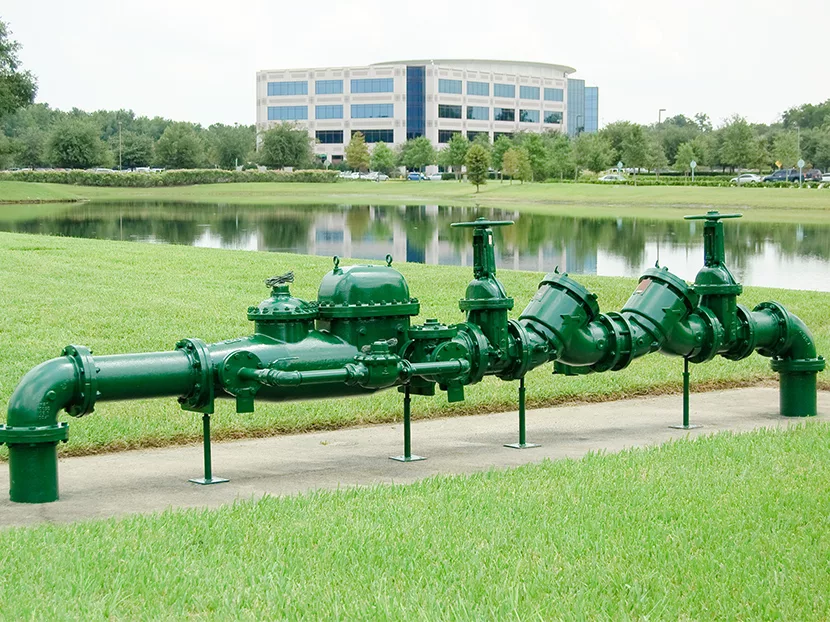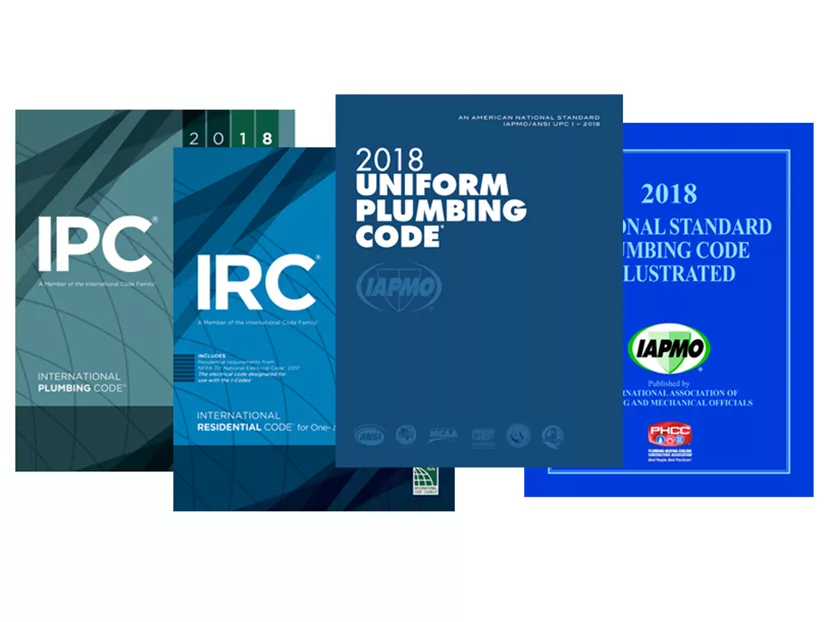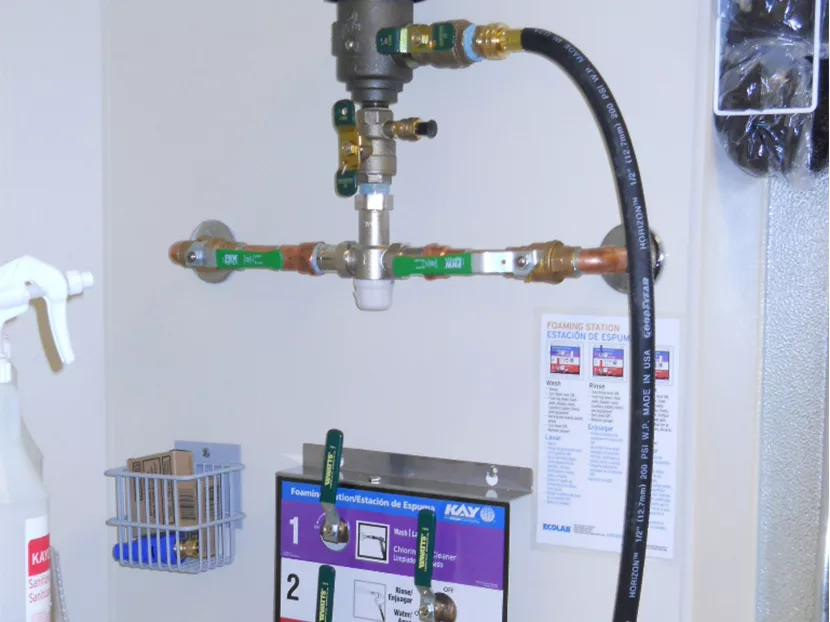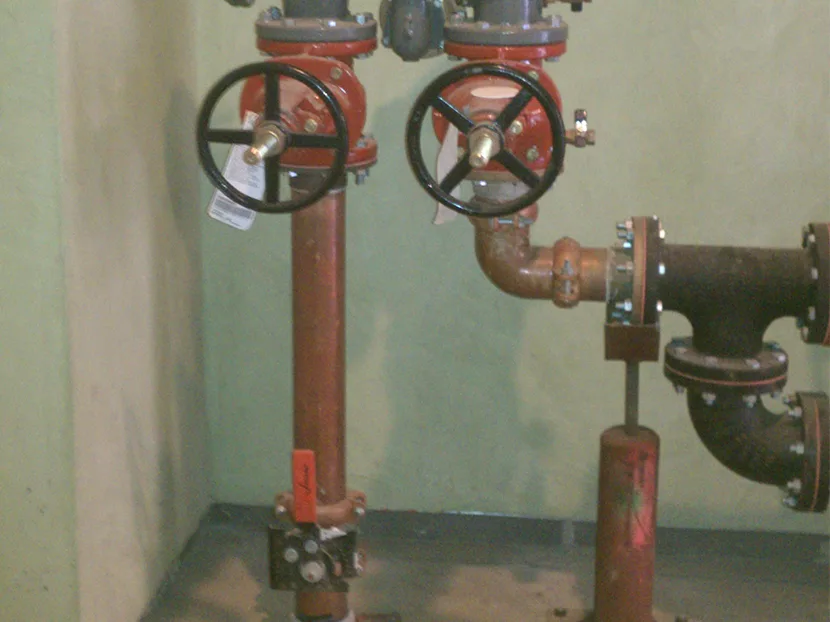Backflow prevention assembly testing, how important is it? The short answer is very important. I would go as far as to say critically important. Backflow protection is necessary to protect our water supply in both public water systems and in the buildings we work and live in. The necessary protection is, in most cases, a mechanical device or assembly that is subjected to varying water conditions, to dirt and debris, and to the simple wear and tear that happens over time.
All three model plumbing codes used in the U.S. require that testable backflow preventers be tested when they are installed, when they are repaired or relocated, and at a minimum on an annual schedule. They also require that this testing be performed by a certified backflow tester. The 2018 Uniform Plumbing Code in section 603.2 states:
Devices or assemblies installed in a potable water supply system for protection against backflow shall be maintained in good working condition by the person or persons having control of such devices or assemblies. Such devices or assemblies shall be tested at the time of installation, repair, or relocation and not less than on an annual schedule thereafter, or more often where required by the Authority Having Jurisdiction (AHJ). Where found to be defective or inoperative, the device or assembly shall be repaired or replaced. No device or assembly shall be removed from use or relocated without the approval of the AHJ. Testing shall be performed by a certified backflow assembly tester in accordance with ASSE Series 5000 or otherwise approved by the AHJ.
Valve manufacturers also recommend the testing of their products be conducted on at least an annual cycle. As an example, Watts Water Technology installation instructions clearly state:
This product must be tested periodically in compliance with local codes, but at least once per year or more as service conditions warrant.
In the industry there are several schools of thought as to how and where backflow preventers should be installed. The term isolation or point of use protection refer to backflow prevention installed at fixtures and appliances. This provides protection to the individuals within buildings or facilities from a backflow that may occur internally within their facility water system. The terms containment, premise isolation, or point of service protection refer to protection placed at the service connection or water meter. The purpose of this protection is to prevent any backflow from the facility back into the public system.
No matter where the backflow preventer is installed, either at the service connection or internally within the facility, it needs to be tested as required in the adopted plumbing code.
When we look at the actual inspection and test of a backflow prevention assembly there are some important items to consider before beginning the actual field testing procedure. There is far more to being a certified backflow tester than just remembering testing steps. Is it the correct protection for the system it is installed on? There are two distinct types of backflow that may occur, backpressure and backsiphonage. It is important to know what hydraulic condition exists or may exist within the water system. We also have two types of hazard categories, the first category, high hazard refers to cross-connection situations, which if backflow were to occur could cause sickness or death. The second category, low hazard refers to a cross-connection situation, which if backflow occurred would only affect the aesthetic quality of the water, and would not cause sickness or death. Each protected cross-connection must be looked at as a unique situation. The tester must understand system types and hydraulic conditions to ensure that the backflow prevention assembly they are testing is the correct type valve needed to provide the necessary protection.
Once the tester confirms that it is the correct assembly providing the system protection needed, they then need to look at the installation itself. Is the valve installed in the right orientation? Some backflow assemblies can be installed in a vertical orientation. Others must be installed in a horizontal only position. Is the valve accessible? Is it the proper height above the floor or grade? Has it been installed near the ceiling, above equipment? All these things need to be considered before the actual field testing of the assembly begins. The Uniform Plumbing Code addresses valve locations. Section 603.4.3 states:
Access and clearance shall be provided for the required maintenance, and repair. Access and clearance shall be in accordance with the manufacturer’s instruction and not less than 12 inches between the lowest portion of the assembly and grade, floor or platform. Installations elevated 5 feet above floor or grade shall be provided with a platform capable of supporting a tester or maintenance person.
Some backflow prevention assemblies have relief ports or air-inlet valves that require additional installation requirements. Section 603.4.9 states:
Backflow prevention devices with atmospheric vents of ports shall not be installed in pits, underground, or in submerged locations. Backflow prevents shall not be located in areas containing fumes that are toxic, poisonous, or corrosive.
The tester must also ensure that when testing a reduced pressure principle assembly or other valve that may discharge water, that the proper drainage provisions have been provided. The code in section 603.4.8 states:
Drain lines serving backflow assemblies or devices shall be sized in accordance with the discharge rates of the manufacturer’s flow rates of such devices or assemblies.
Many times, a tester may encounter a reduced pressure principle assembly, which has little or no provisions made for drainage for possible relief valve discharge. It is important that this factor be considered before testing these assemblies. One of the worst days of my backflow testing career happened when as a newly certified tester I tested a 6-inch reduced pressure principle assembly in a mechanical room with no drainage. During the testing of the assembly the relief valve went into total discharge and caused significant flooding before I was able to shut off the water service. It was a hard lesson learned. Testers should always ensure that drainage of the assembly is provided before beginning any testing. When the tester encounters installations that do not meet the minimum requirements, it is critical that this information is documented and provided to the facility owner and to the AHJ.
Once we know that the proper type valve is installed correctly in the proper orientation, with all necessary provisions made for location, drainage, accessibility, and safety the testing can begin. While there is no single nationally recognized tester certification program, there are several widely accepted tester certifications including the American Society of Sanitary Engineering (ASSE) Series 5000 certification standard. The ASSE program is currently the largest and most accepted tester certification in the U.S. Other certification programs include the American Backflow Prevention Assoication and the New England Water Works Association. There are also several state and local certification programs accepted in various parts of the country.
There are several different field tester procedures for testing backflow prevention assemblies used in various parts of the country. Testers should use the procedure required by the AHJ in their location. The purpose of any test procedure is to ensure the valve is doing what it is designed to do, prevent backflow from occurring. The test allows us to see how the assembly is performing at the time of the test, however it does not ensure that the assembly will continue to provide the necessary protection in the future. That is why the proper selection, installation, testing, and maintenance of backflow prevention protection is so important. Remember we are in the cross-connection control, backflow prevention business. We prevent bad things from happening, we use the tools we have available stop problems before they occur.
So, to answer the question posed at the beginning of the article, testing of backflow prevention assemblies is a vital and necessary part of protection the public health and welfare of everyone.







